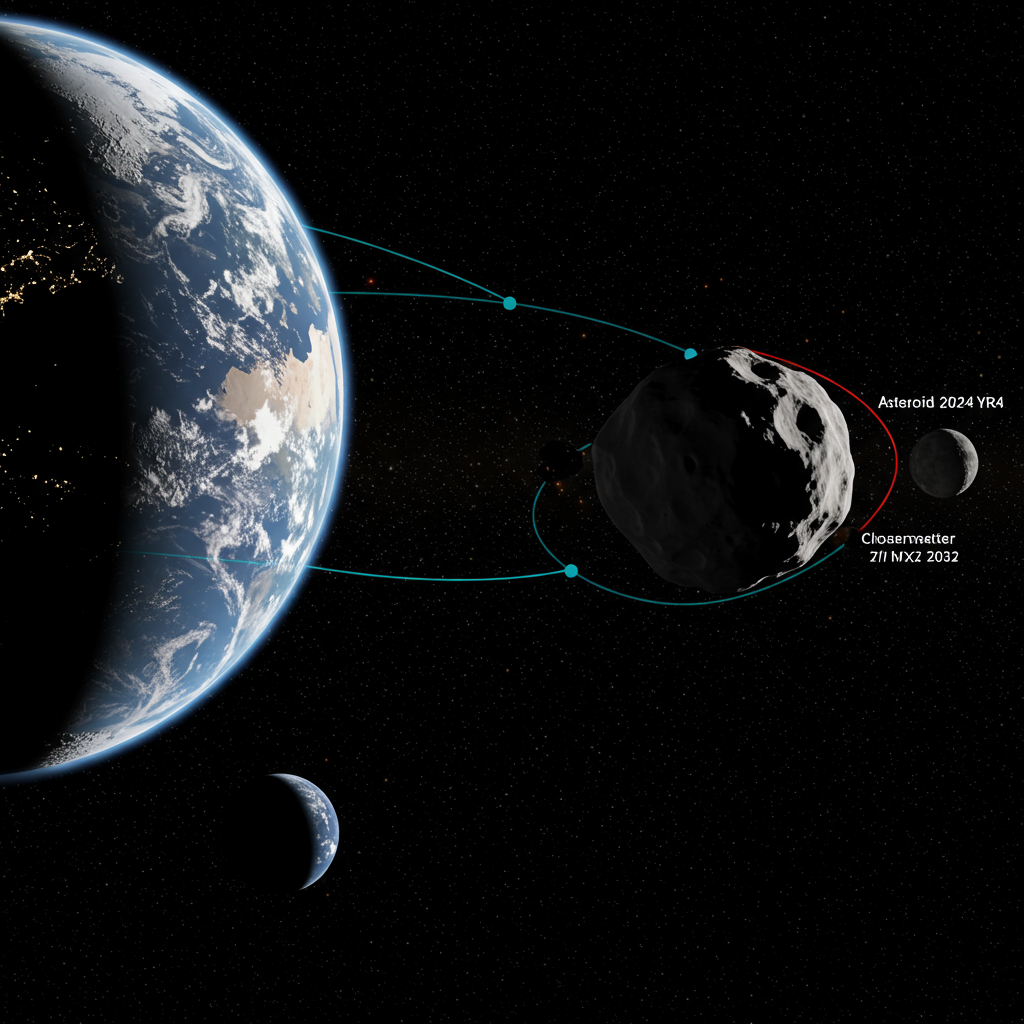The asteroid known as 2024 YR4, which once captured global attention due to a potential impact trajectory with Earth, is back in the headlines. However, the focus has shifted from our planet to its closest celestial neighbor: the Moon.
Originally flagged for its near-Earth path, astronomers are now closely monitoring 2024 YR4 for a potential close encounter with the Moon in 2032.
Key Insights into Asteroid 2024 YR4’s Trajectory
Latest calculations indicate 2024 YR4 has a 4.3% chance of impacting the Moon in 2032. This probability is actually higher than the peak estimated risk the asteroid posed to Earth.
Cutting-edge technology, specifically NASA’s James Webb Space Telescope (JWST), was used for the most recent, crucial observations.
Due to its current position, the asteroid is not currently visible and won’t be observable again with Earth-based telescopes until 2028.
Should an impact occur, NASA has stated it would not alter the Moon’s orbit.
From Earth Concern to Lunar Focus
Asteroid 2024 YR4 first appeared on the radar in late December by the Asteroid Terrestrial-impact Last Alert System (ATLAS) station in Chile. Its initial trajectory quickly drew significant attention from scientists, media, and the public alike due to an uncommonly high probability of hitting Earth.
However, subsequent observations, aided by increasingly sophisticated tracking, progressively reduced the estimated risk to our planet. By February, space agencies confirmed that 2024 YR4 no longer posed a significant threat to Earth for the next century.
As the calculated risk for an Earth impact diminished, these same refined observations revealed an increased likelihood of the asteroid interacting with the Moon. The estimated probability of a lunar strike rose from a mere 0.8% in February to its current 4.3%.
Unlocking Secrets with the James Webb Space Telescope
Pinpointing the precise path of 2024 YR4 required peering beyond the capabilities of standard telescopes. Recent observations in May relied heavily on NASA’s powerful James Webb Space Telescope. Using its advanced Near-Infrared Camera, researchers gathered critical data just before the asteroid’s orbit carried it too far from Earth to be detected.
The JWST’s infrared capabilities have significantly improved our understanding, enhancing the accuracy of predicting 2024 YR4’s 2032 location by nearly 20%. Furthermore, these observations have provided more precise size estimates, now placing the asteroid’s length between 174 and 220 feet – roughly comparable to the height of a 10-story building.
Understanding Asteroid Activity Near Earth
The case of 2024 YR4 highlights the dynamic nature of asteroids in our solar system, particularly those classified as near-Earth objects. These space rocks constantly interact with the gravitational pull of Earth and the Moon.
This cosmic dance can manifest in various ways. While a potential impact like the one considered for 2024 YR4 with the Moon is significant, other interactions are far more fleeting. For example, Earth recently experienced a temporary gravitational capture event with a tiny asteroid, designated 2024 PT5. This small object, estimated to be only about 37 feet wide (significantly smaller than 2024 YR4), briefly became a “mini-moon” for a few weeks in late 2024 before returning to its regular orbit around the sun.
Such temporary captures of small asteroids are considered relatively common occurrences, demonstrating how Earth’s gravity influences passing space rocks. The difference in scale between a temporary visitor like 2024 PT5 and an object like 2024 YR4, which poses a distinct, albeit still low, chance of collision with the Moon, underscores the diverse range of interactions happening in our cosmic neighborhood. While objects like 2024 PT5 are too small and distant for amateur skywatchers to see, professional astronomers continuously track potentially impactful asteroids like 2024 YR4 to refine their trajectories and assess risks.
As 2032 approaches, scientists will continue to monitor 2024 YR4, using future observation windows like the one expected in 2028 to update calculations and gain a clearer picture of its anticipated close flyby with the Moon.




